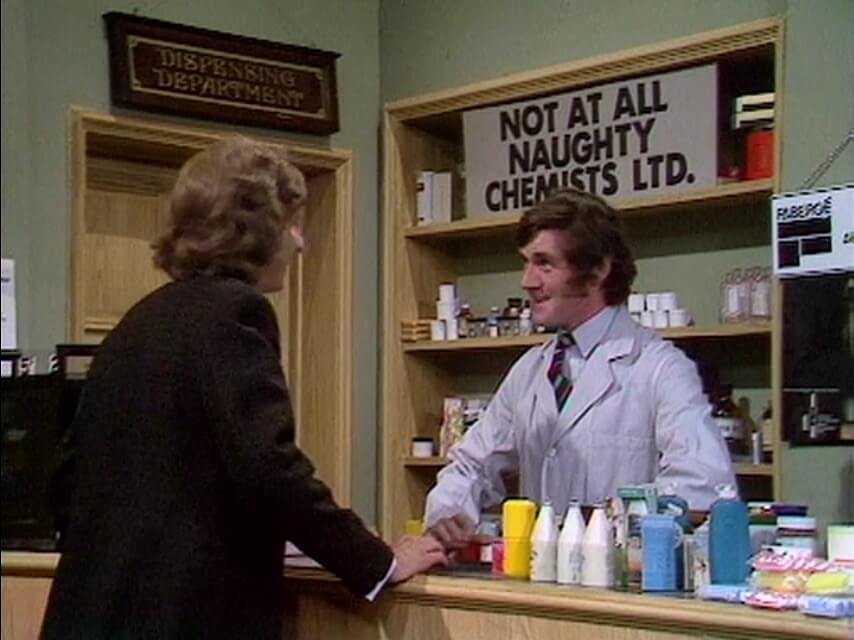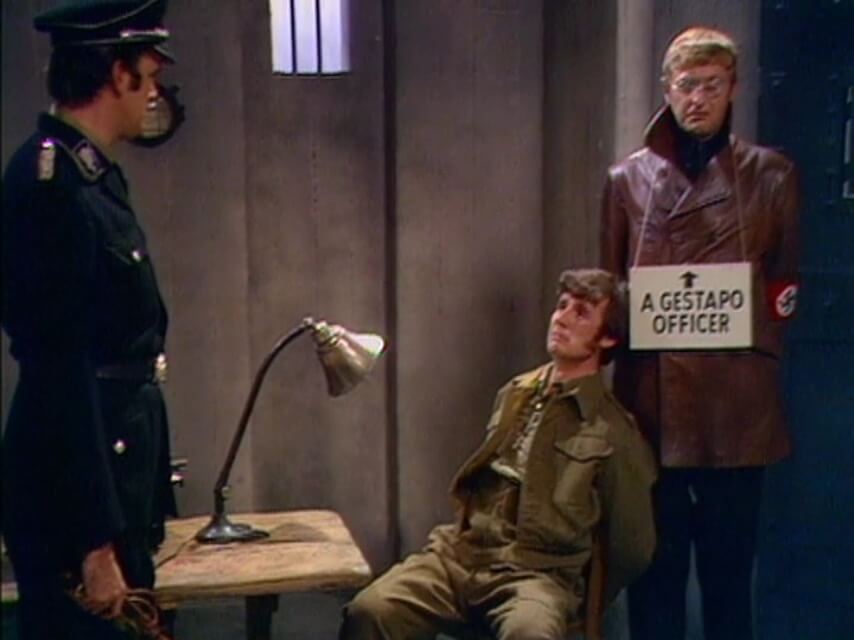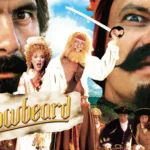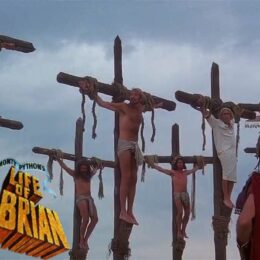MONTY PYTHON, comedy phenomenon that changed pop culture forever

This inconspicuous group of comedians from England (and one from the US) has become a huge part of our pop culture. It is responsible for our numerous associations and well-known jokes. He gallops briskly through comic history to the cheerful sound of coconuts clattering against each other. I invite you to the world of the absurd. Monty Python’s Flying Circus lands.
6 funny guys
On October 5, 1969, BBC viewers had no idea that the premiere broadcast of a new satirical program would start a world cultural revolution. Then the first episode of Monty Python’s Flying Circus was presented to mankind. A sketch about a bicycle rally with Picasso or the funniest joke in the world was just a warm-up for the Beatles comedy and British pop culture. And they included six big names. Pictured from left to right: Eric Idle, Graham Chapman, Michael Palin, John Cleese, Terry Jones and Terry Gilliam.

The Pythons met in college, Graham, John and Eric in Cambridge, Terry Jones and Michael while studying at Oxford. The group was eventually brought together by working on various comedy shows, including The Frost Report, a satirical BBC show. After years of working on TV projects, the station has no questions asked and put together a budget for a TV show for a fresh and cohesive bunch of six funny guys. It was a good move. The Pythons knew what they wanted to create and what they represented. They based their output on their favorite sketches, including from Beyond the Fringe, enhancing and spicing up the performances. They worked on the scripts individually or in small groups. They took what made everyone laugh. That’s how they created Monty Python’s Flying Circus from scratch, a comedy show made up of several loosely connected scenes and sketches. The Circus was characterized by absurd, sharp and surreal humor. They created a new quality, experimenting and departing from the usual rules of television comedy. No earlier program was so anarchist, and that was their source of success. The group freely allowed itself to mock various distinct social groups in Britain, concealing its social analysis. They did not even refrain from mocking the BBC, mainly pointing out financial problems and cost-cutting. Everyone had their hands tied, no one could limit their jokes, take them off the air. It was just a modest band of comedians whose innocent jokes slowly began to take over the country.
Terry Jones recalled an animation that Terry Gilliam created years ago for yet another comedy show, Do Not Adjust Your Set. She intrigued him with her conscious style. He stated that they should use it in their series. Another brick was added that built the distinctive style of Monty Python. This allowed the animation inserts to complement sketches, giving them the appearance of a single stream of consciousness. Gilliam’s job was mostly to play with the camera and scissors. In this way, he created a kind of collage. He combined bizarre animation with pasted photos and images. The specific animation style has become the group’s trademark. An iconic foot also appears with every cartoon opening of an episode of the Flying Circus. It is a cut cupid’s foot from Agnolo Bronzin’s Mannerist painting Allegory of Time and Love. Anyway, see for yourself.
Related:
What's so funny?
In terms of style and form, the Monty Python group revolutionized not only British television, but also our approach to humor. Things so flimsy, so strange and irrational suddenly began to amuse us. What is their secret? I was able to isolate nine typically Pythonic attributes that became the hallmark of their school. First and foremost, absurdity and exaggeration. This is not subtle and sophisticated humor. This is nonsense so nonsensical it’s funny. Their world is shown in a distorting mirror, against everything that is normal for us. How else to explain an existing service group that specializes in confusing bemused cats? Educated doctors who use a nifty machine that does PING? Let’s not forget about Brian, who lives in 31 AD and accidentally ends up on an alien ship. Donors of living organs, a seller of dead parrots, the unexpected Spanish Inquisition, the Ministry of Silly Walks or Pontius Pilate with a speech impediment. This is the absurdity behind which satire of the Pythons is hidden. Black humor, though specific, is also welcome in the works of comedians. Corpses are many, and the laughter in the room does not subside. The creators easily set the action of the sketches on the battlefields, in the war trenches, in the shantytown, presenting the heroes in a truly grotesque way.

The Group draws from various sources. They use explicit references to historical figures, pop culture and destroys religious taboos. They take on the Nazis and Hitler, mocking and exaggerating stereotypes. The North Minehead Bye-Elections scene shows Hitler with advisers masquerading as tourists planning a trip out of town plotting over a map of Stalingrad. The song Always Look on the Bright Side of Life sung by a cheerful bunch of crucified also needs no introduction. That is why some of their skits, even touching on topics related to religion, were considered profanation. Nevertheless, whenever the opportunity arises, it is worth remembering its optimistic text.
Mocking everything and everyone also requires self-mockery, which was not lacking here either. Monty Python makes fun of the British, deepening stereotypical thinking about them. The exaggerated loftiness and solemnity of lords sipping afternoon tea are ideal targets. They also laugh at themselves, emphasizing the modesty of their sketches. They also often use an interesting motif, rarely seen in cinematography, and even less often in television series. Breaking the fourth wall, i.e. breaking the barrier between the hero and the viewer. With Python, it works surprisingly well and, most importantly, funny. The characters of the series seem to be well aware that they are only on the set of a TV show and do not hide it. They address the viewer directly, reveal secrets from behind the film set. An example is a sketch about a pharmacy. The customer played by Eric Idle, waiting alone in the frame for the pharmacist to return, turns confidently towards the camera and says:
Sorry about that. We usually try to avoid pauses and breaks. He just pretended to go down to the basement. There is no basement. He leaves and we continue to pretend. He steps out of the frame and waits nearby to pretend he has gone downstairs to the basement.

Comedians passionately use a certain trick that personally makes me laugh the most. The opening scene of the famous movie Monty Python and the Holy Grail is probably one of the most famous. King Arthur emerges proudly on an imaginary horse, jumping up and down like a child in a playground. Right behind him, Patsy jumps briskly, hitting the two halves of the coconut, imitating the sound of horse hooves hitting the ground. It is said that the group did not have enough funds to rent a real horse. Perhaps the Pythons liked the cost cuts because they used it in their earlier sketches. By imitating amateur, low-budget productions, comedians introduced the best jokes. In the sketch The Funniest Joke in the World, instead of recruiting two actors to play two separate Nazi roles, they used the character of Graham Chapman twice. Engaging him in two different scenes to distinguish one character from another, in the next sequence they adorned the actor with a sign that read “Totally different Gestapo officer.” It was the same with the dead parrot sketch. Two completely different pet stores are shown as the same place, differing only with the voice-over comment “Identical pet store, only in Bolton”. Very natural.

Jokes and gags are one thing, but the selection of actors and their creations is a completely different art. Here the choice was always right, the main roles always went to one of the six Pythons. Although no one questions the acting skills of the comedians, the artificial wooden acting added a specific charm to the scenes. The characters moved stiffly, had a funny, forced accent, which gave an unreal, surreal, bizarre feel. It is also worth mentioning here that a good actor is not afraid of any role. That is why comedians often tried on dresses and wigs, playing female roles amateurishly, modeling their voices in a funny way. They introduced a new, funny tone, kind of clichéd, kind of simple, but working perfectly. We remember Terry Jones very well as Brian’s dubiously attractive mother, Mandy Cohen. So much for theory, now for practice.
Attention! If you want to take your own life translating a joke from German, I have bad news for you. It’s just German-sounding gibberish that has no real meaning. For the sake of humanity, I appeal to lower the veil of oblivion over the enigmatic piece.
Monty Python has landed
Although a lot of work and the whole idea of Monty Python is contained in the Flying Circus, the group’s career did not end there. In 1971, And Now for Something Completely Different was released, a collection of the best sketches from the first two seasons. At the end of the third series of The Circus, undisputed icon John Cleese departs, leaving the five to fend for themselves. He explained his departure by the lack of fresh ideas for sketches, the loss of the former imaginativeness of the Group. The incomplete team recorded only six episodes of the fourth series, not 13 as they used to. Fortunately, Cleese’s decision was not final, and the Pythons were about to shine again. The Pack reunited while working on their first proper feature film, the aforementioned 1975 Holy Grail. The search for the titular Grail resulted in many absurd adventures, which the viewers enjoyed immensely, and motivated the group to continue their work. In 1979, it was the turn of Life of Brian with the song quoted earlier. The six unilaterally agreed not to mock the figure of Jesus and his teachings. Instead, she targeted the title Brian, a peer of Christ. The symbol of the production has become a sandal, used, for example, in a film poster by Jakub Zasada. The film strongly refers to the text of the New Testament, caricaturally dealing with biblical rhetoric. After all, for Monty Python, any subject was a joke. This one, for some Christians, was like a splinter under a fingernail for obvious reasons.
However, the most revealing and ambitious work of the comedians is the last film in which they nostalgically return to the tradition of the Flying Circus. The Meaning of Life from 1983 is a picture of the history of man from his birth to death. It envelops the diversity of human life in a comical robe. Although he touches on serious issues of the sublimity of existence, he is not vulgar about it. Even the song of praise for sacred sperm has something beautiful and absurd at the same time, being a brilliant satire on church dogma.
The Meaning of Life turned out to be the band’s last joint work. Although comedians met informally on some projects after 1983, rumors of a Python reboot never materialized. After Graham Chapman’s death in 1989, all speculations ceased. However, the activities of “slow-witted” satirists left a huge legacy. It took root directly in the mentality of the British to such an extent that they began to speak Monty Python. An example of a visible cultural influence is a word taken directly from the group’s sketches, pythonesque. This is an expression that has entered the English lexicon and means something that is closest to the Pythons: a surreal, absurd performance with elements of nonsense.
The triumph of the absurd
Six British eccentrics changed the face of television and shaped the sense of humor of entire generations. This inconspicuous group of comedians became much more than the heroes of comedy sketches. 40 years ago, when it was thought that everything that was to be made was already made, and everything that was to be invented was already invented, a group of comedians created a style and a world-famous brand, previously unheard of and impossible to improve. And their secret was simplicity and, one might think, primitiveness that aroused great emotions. Stupidity and carelessness, however, enveloped the inner intellectual approach to satire. The specific, rich style was loved by some, hated by others or not understood. But everyone has heard of them. For years, the Pythons have merrily reigned in the stronghold of comedy in the hills of the absurd. If they are ever dethroned by anyone, I see it as nothing but the first sign of the approaching end of the world. The strained world can’t take any more nonsense.
P.S. I am glad, reader, that you have gone through all the thick lines of text. As a reward, I will give you the confirmed information that Monty Python will return with a ranking of the best sketches. But keep it a secret, it’s supposed to be unexpected like the Spanish Inquisition.




